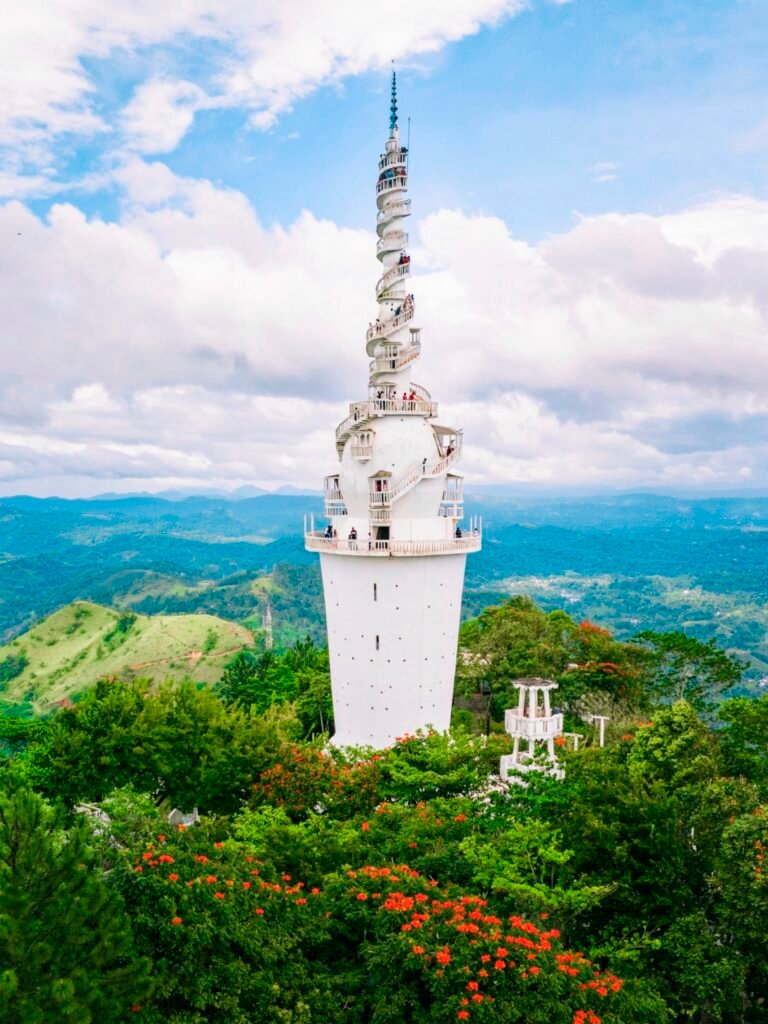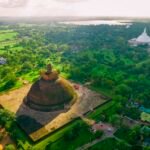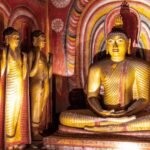Sixty kilometers south of Dambulla lies Kandy, Sri Lanka’s second-largest city, with a history and ancient civilization spanning over 2,500 years. Surrounded by mountains and home to rare plant species, Kandy is a beautiful city that served as Sri Lanka’s capital from the 15th to the 19th century. It is also the location of the country’s most famous Buddhist temple, the Temple of the Tooth Relic.
Kandy offers numerous attractions, mainly related to palace architecture and Buddhist culture. The city retains several royal structures along with colonial buildings that reflect exotic influences. What makes Kandy even more significant is that, during the feudal era, it became a cultural hub thanks to the presence of royalty. This royal patronage enriched the city’s cultural landscape, including temples supported by the monarchy and exquisite sculptures and murals that adorn its architecture.
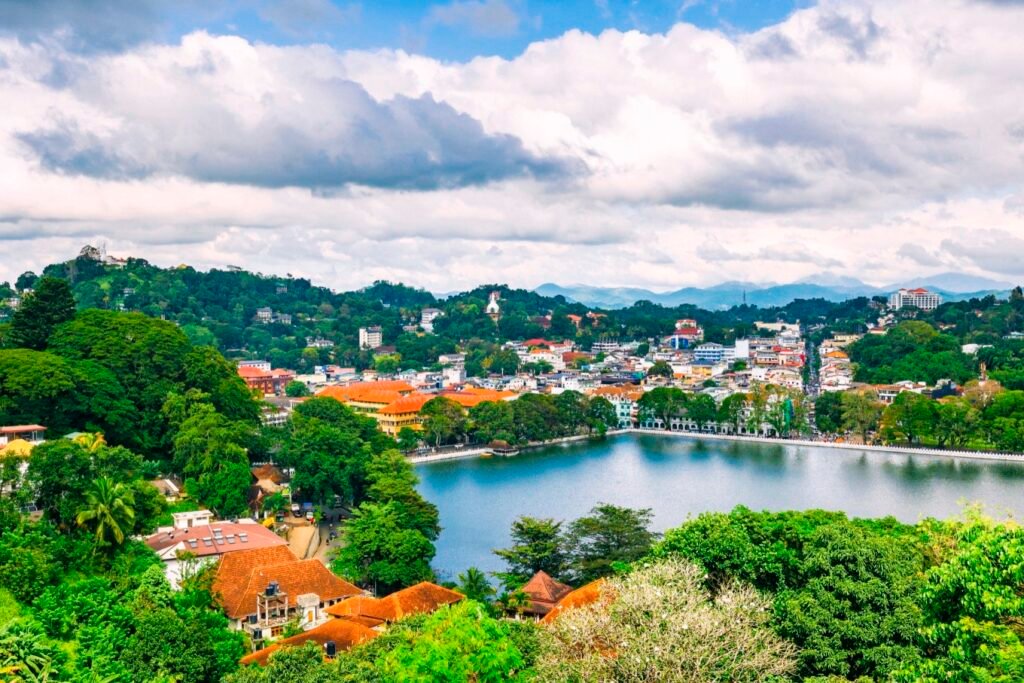

In Sinhalese, “Kandy” means “highlands,” perfectly reflecting the city’s characteristics. Kandy is surrounded by mountains, with an average elevation of around 500 meters. At the heart of the city lies Kandy Lake, embraced by the surrounding hills.
The ancient city of Kandy was established in the 14th century and remained a significant center until 1815, when the British invaded. In the 4th century AD, the sacred Tooth Relic of the Buddha was brought to Sri Lanka, and from that moment on, the royal palace and the Temple of the Tooth Relic became deeply intertwined with the city’s administrative and religious functions as the capital.
In 1592, Kandy was officially declared the capital of Sri Lanka, marking it as the seat of both the monarchy and the Temple of the Tooth Relic. In 1988, Kandy was recognized as a UNESCO World Cultural Heritage Site.
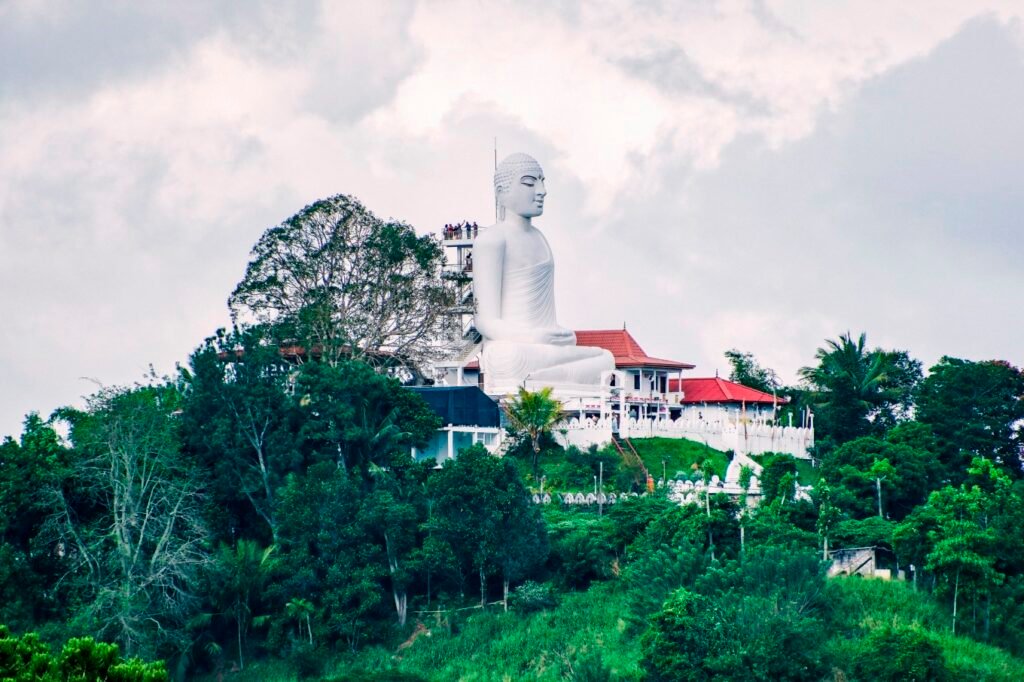
On the hillside of Kandy, there is a viewpoint that offers a panoramic view of the entire city. During the time of the Sinhalese Kingdom, when Kandy served as the capital of Sri Lanka, and throughout the later colonial period, the city retained several royal structures along with colonial buildings that reflect exotic influences. Having experienced both the Sinhalese Kingdom and colonial rule, Kandy is considered the best-preserved repository of Sinhalese culture and remains the cultural center of Sri Lanka today.
Kandy dance is one of the defining symbols of Sinhalese culture in Sri Lanka. Originating from the central highland region once governed by the ancient Kingdom of Kandy, it is also known as the highland dance. Before visiting the Temple of the Tooth Relic, we had the chance to watch a performance of Kandy dance.
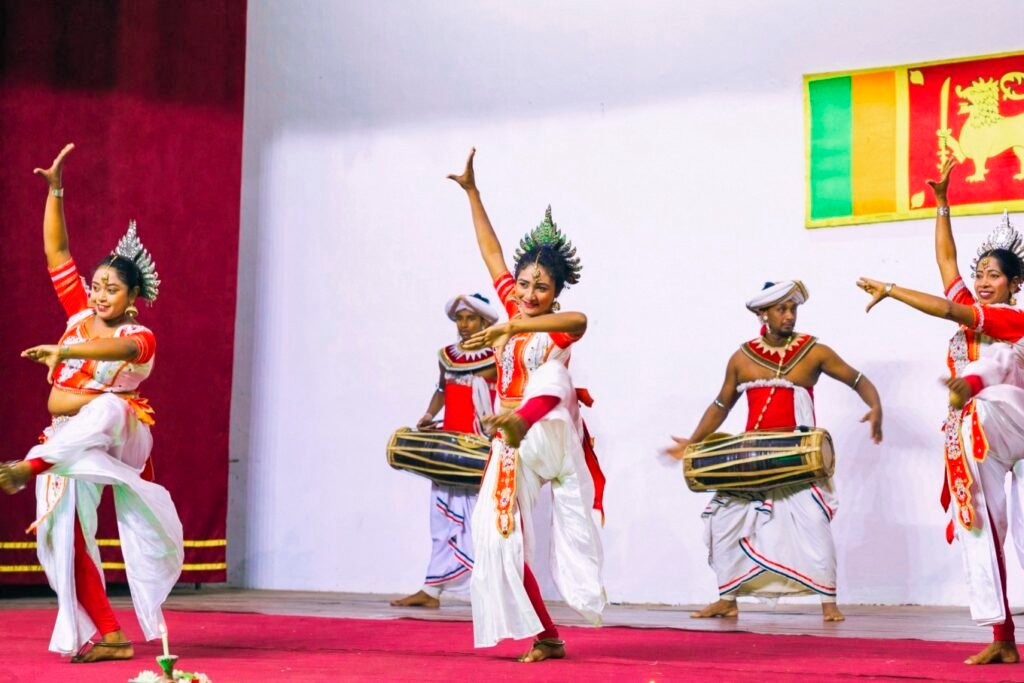
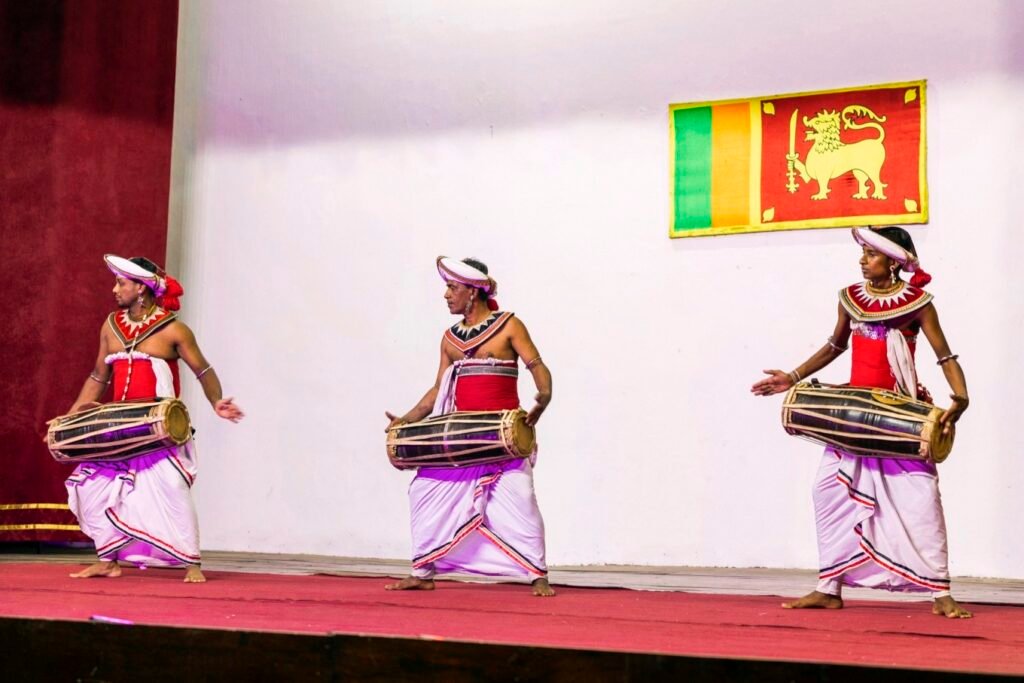
The performance begins with a traditional welcome ceremony and a ritual drum performance. This is followed by the devotional dance, a traditional prayer dance where performers seek the blessings of devol maduwa in honor of the goddess Pattini. Devol is a revered deity in Sri Lankan culture, worshiped as one of the twelve gods, known collectively as dolos deviyo. It is believed that these deities have the power to intervene in worldly affairs.

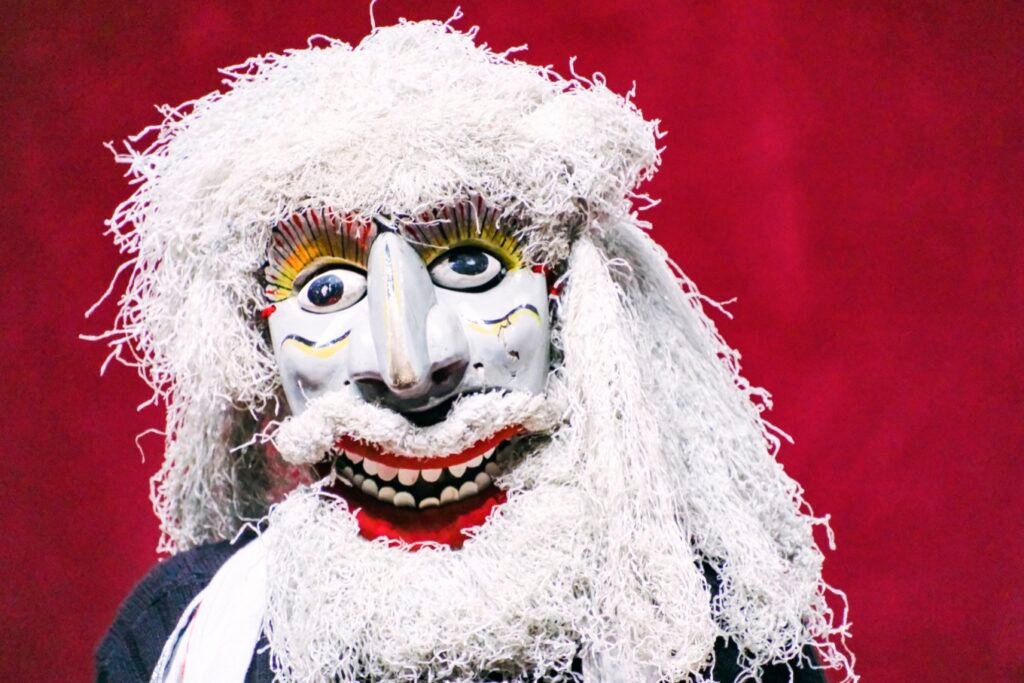
Devol dance is associated with a revered deity in Sri Lanka. Devol is one of the twelve gods worshiped in Sri Lanka, collectively known as “Dolos Deviyo,” and it is believed that they can intervene in worldly affairs.
Pantheru, also known as acrobatics, is a popular dance performed at village festivals and celebrations. This dance involves the use of decorative copper rings, which the dancers skillfully manipulate to create a series of rhythmic patterns.
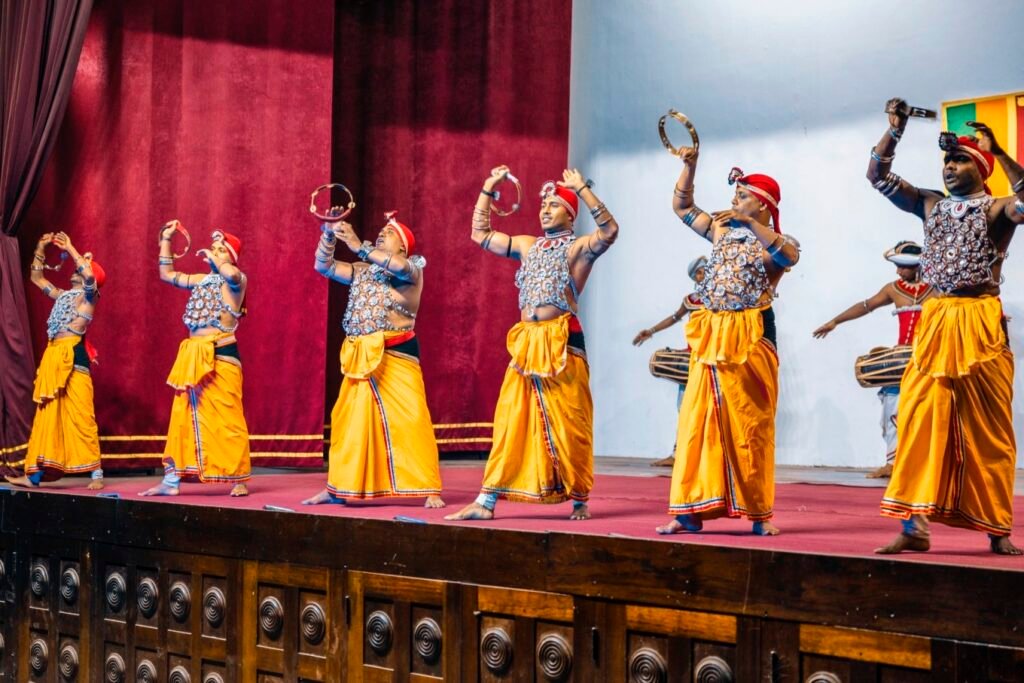


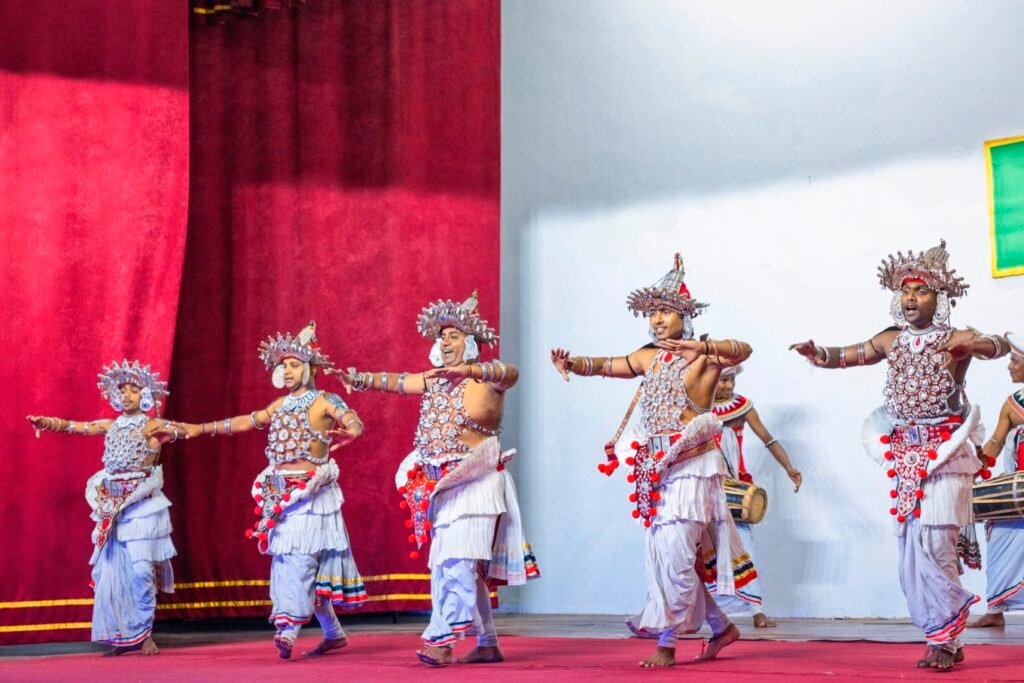


Ves dance features the traditional costumes of Kandy dancers. The performance is highly rhythmic and reaches multiple climaxes, serving as a prayer for blessings. The Kandyan Ves dance is considered the king of Kandy dances. The show concludes with a fire-walking performance.

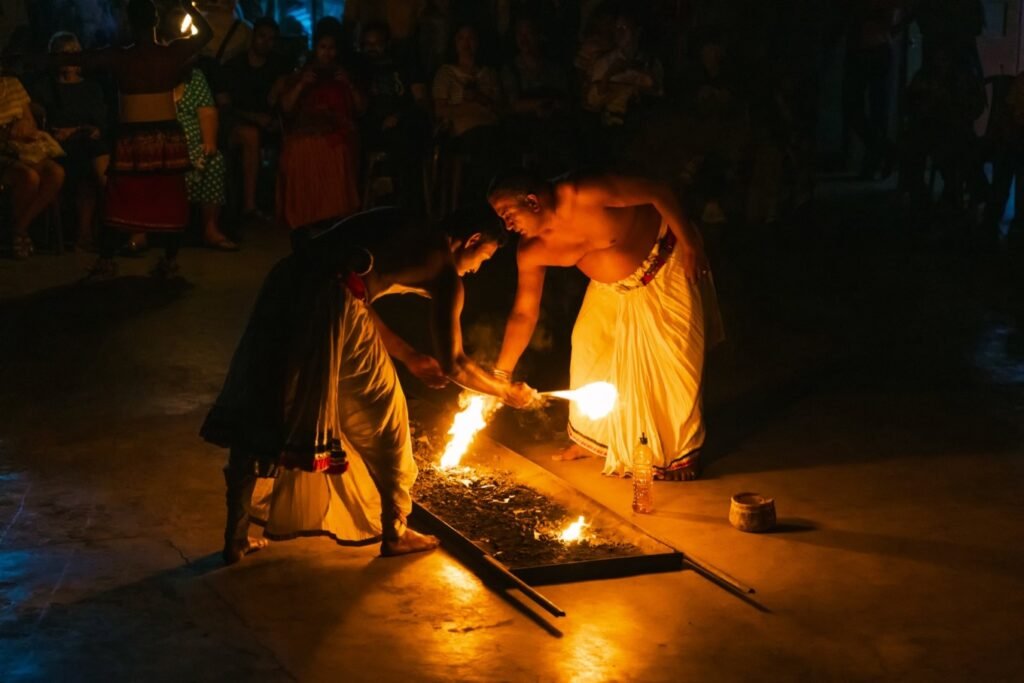
Over the centuries, this dance has been preserved and developed with the support and patronage of the royal family, local chieftains, and religious institutions. Since Sri Lanka’s independence, art institutes, dance schools, and professional performance groups have been established. Kandyan dance has continuously innovated while inheriting traditional elements, reaching near perfection. In Kandy, professional troupes perform for tourists almost every day.

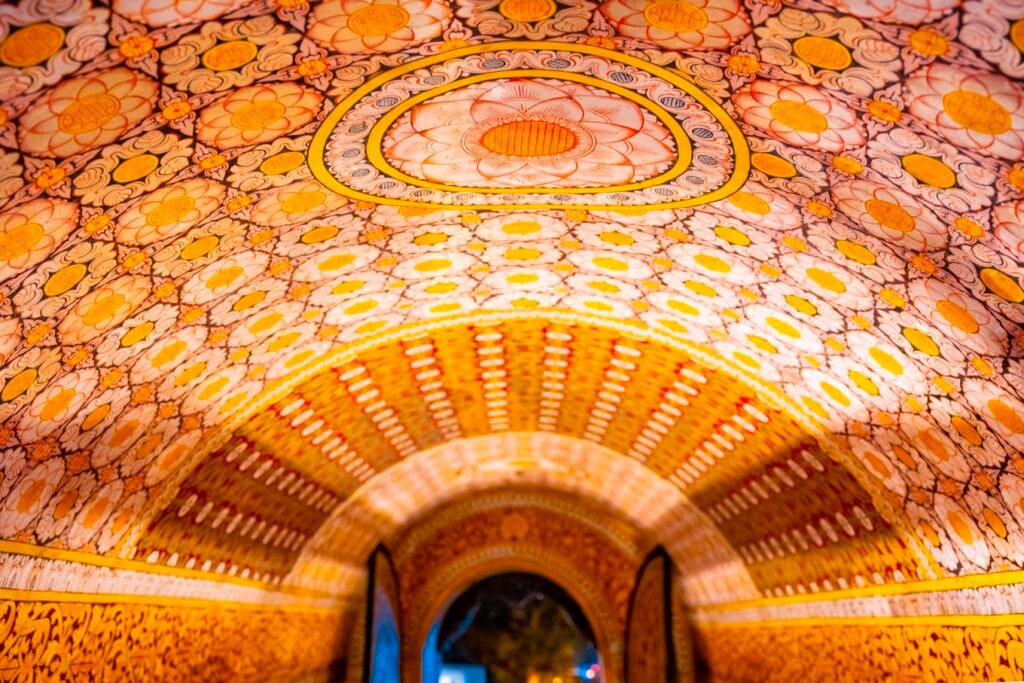
It is said that after Buddha Shakyamuni entered Nirvana, he left behind two tooth relics, one of which was brought to Sri Lanka. Since then, the Buddha’s tooth relic has become a symbol of royal authority in Sri Lanka and, even more importantly, a sacred object in the hearts of Buddhists. Today, as Sri Lanka’s most treasured national relic, it is enshrined in the Temple of the Tooth. Whether during the grand annual Esala Perahera festival or when the president visits to pay homage upon taking office, everyone can feel the spiritual power of this single tooth.
Sri Lanka has many temples, among which the Temple of the Tooth in Kandy is renowned far and wide for housing the Buddha’s tooth relic after Shakyamuni’s passing. It is highly favored by a vast number of domestic and international tourists and was listed as a UNESCO World Heritage Site in 1988. The Temple of the Tooth is not only a place where numerous Buddhists come to pay their respects but also a must-visit destination for many travelers to Sri Lanka.


The Temple of the Tooth is bustling with devoted worshippers every day. The offering tables are piled high with purple lotuses and white frangipani flowers. Men and women of all ages, dressed in white shirts and skirts, sit on the ground with hands folded, deeply immersed in their prayers, reciting scriptures with utmost devotion, praying for beauty and happiness. It is said that every new president of Sri Lanka must come to the Temple of the Tooth to pay homage before taking office, which shows the sacred status of the temple in the hearts of the Sri Lankan people.
Built in the 15th century, the Temple of the Tooth has been expanded by successive kings into a grand and magnificent complex. The main entrance is at the west gate, and the temple is surrounded by a protective moat. It stands on a platform about six meters high and has two floors with a complex structure of interconnected halls. The main buildings include the Buddha Hall, Drum Hall, Long Hall, Scripture Hall, Great Treasury, and Inner Hall, among others. The most important building is the central main hall. Inside, there are stone carvings, wood carvings, ivory carvings, and gold, silver, copper, and iron cast ornaments. The walls, beams, and ceilings are covered with colorful paintings, making it resemble an art museum.
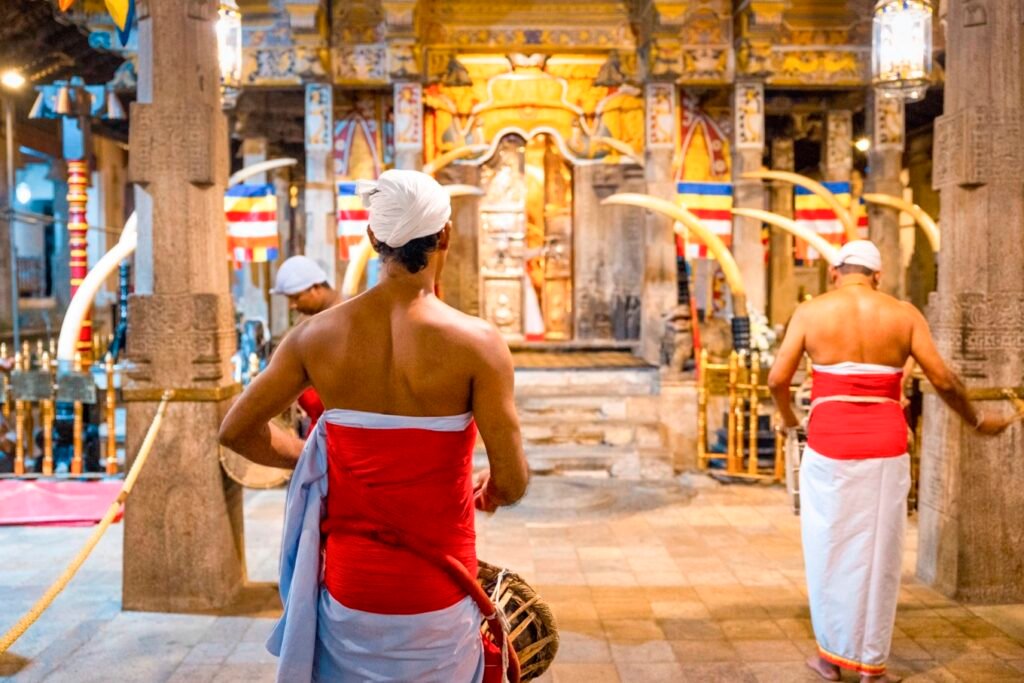

The national treasure—the Buddha’s Tooth Relic—is enshrined in the inner chamber on the second floor, which is the core of the temple. In the center of the inner chamber stands a large seated Buddha statue. In front of the Buddha, the altar is adorned with lotus flowers and candles, with incense smoke curling continuously. On the left side of the hall is a dark room where the Tooth Relic is kept. Inside this room is a seven-tiered golden stupa, consisting of a large and a small golden stupa. The large stupa usually houses the Tooth Relic and is encrusted with various rubies and sapphires, exuding solemnity and majesty.
Each layer of the golden stupa encases the one beneath it, with the innermost small stupa less than one meter high. Inside the stupa is a golden lotus flower, and at its center is a jade ring where the Tooth Relic is placed. The seven-tiered golden stupa requires nineteen keys to open, usually held by nineteen hereditary trustees. All trustees must be present to unlock the stupa. During the Tooth Relic Festival, the Tooth Relic is moved from the large stupa to the small one and then carried through the city on the back of a caparisoned elephant.
The wooden doors of the shrine housing the large stupa are opened three times daily—morning, noon, and evening. Amidst the sound of drums and music, three high monks, each holding a different key, open the doors to the inner chamber to conduct a grand worship ceremony. After the ceremony, they open the archway of the inner chamber, allowing ordinary believers and tourists to view and pray before the stupa that enshrines the Tooth Relic, each session lasting about half an hour.
Opposite the shrine is the library, which houses the Buddha’s preaching manuscripts. Most notably, there are palm-leaf scriptures inscribed with a needle on processed young palm leaves, remaining clear and legible after a thousand years. In the end, we couldn’t make our way inside and could only follow the crowd on the second floor, moving in a circle before exiting.
Every year during the full moon in August, Kandy holds a grand Tooth Relic Festival, which I highly recommend. It is the most magnificent festival in Sri Lanka and one of the most grandiose Buddhist festivals in the world. Believers can only pay homage to the Tooth Relic during this time. The temple becomes filled with devout worshippers, facing the Tooth Relic, kneeling or sitting on the ground, chanting sutras in the most sincere voices. Their eyes radiate devotion and firmness, making you feel your own heart becoming more pious and pure. During the ten-day celebration, the most solemn day is the full moon day.
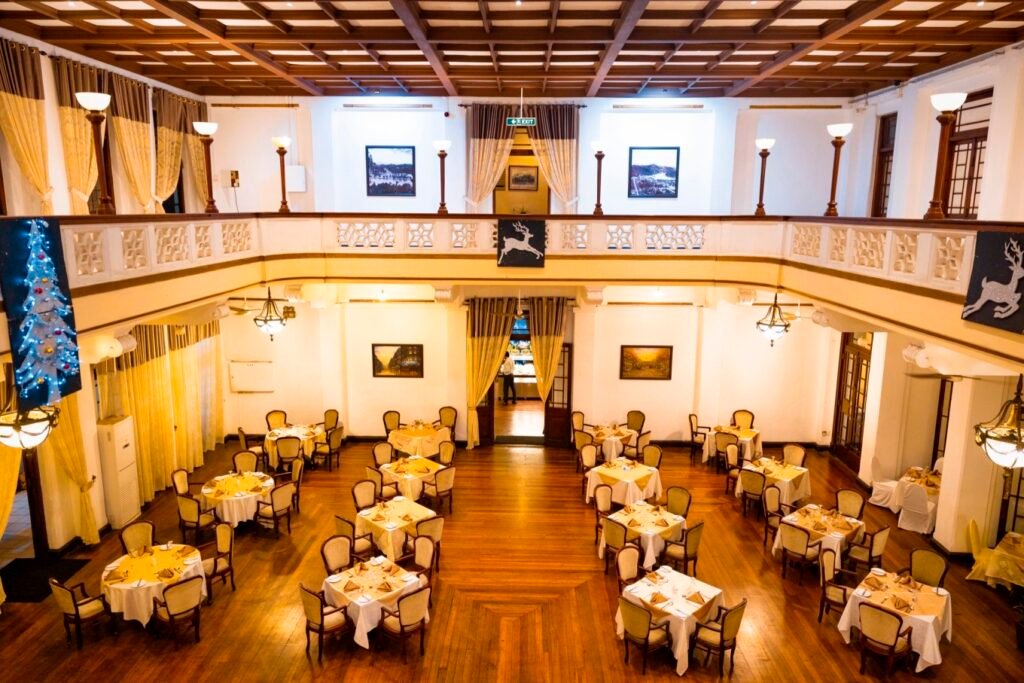

The hotel we stayed at in Kandy was a renovated early British-style building, exuding an exotic flair and a sense of history. The walls displayed old photographs of ancient Kandy. Starting from the mid-18th century, the British spent nearly half a century laying the groundwork to colonize Sri Lanka. It wasn’t until 1815 that Kandy, the last bastion of feudal royal power in modern Sri Lanka, was captured by the British.
This period can be considered a turning point in Sri Lanka’s modern history, marking both the complete end of the ancient dynastic era and the beginning of full colonial rule. The fall of Kandy had profound significance for Sri Lanka. It meant that the island’s millennia-old historical traditions—including the caste system and Buddhist beliefs—lost their important refuge, and the inherent cultural development trajectory would be disrupted. The British establishment of a colonial administrative system across the entire island can be seen as the greatest upheaval Sri Lanka had faced in over 2,000 years since Prince Vijaya’s arrival.
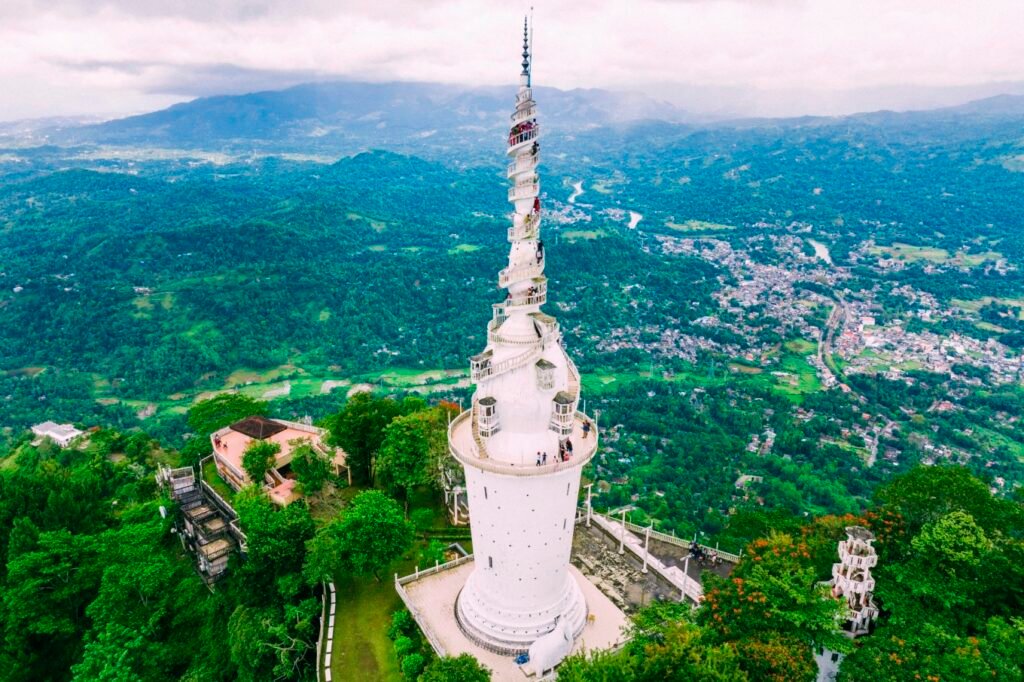

Sky Tower: Ambuluwawa Tower
The city of Kandy is centered around the beautiful Kandy Lake, which is even more breathtaking in different seasons. You can stroll along the lakeside to enjoy the stunning natural scenery and explore nearby historical buildings and cultural sites.
Sri Lanka’s Sky Tower, officially known as Ambuluwawa Tower, is located about 28 kilometers from Kandy. We departed from Kandy to visit Ambuluwawa Tower—a white spire built atop a mountain, also known as the Sky Tower. Ambuluwawa Tower is a popular destination for many outdoor enthusiasts. On the way from Kandy to Nuwara Eliya, you can admire this unique structure. The tower stands 48 meters high, and its design is influenced by European Gothic and Islamic architecture. It is a sacred place of worship for the four major religions in Sri Lanka: Buddhism, Hinduism, Islam, and Catholicism.
Ambuluwawa Tower is located in Gampola at an elevation of 3,567 feet. It is a magnificent structure, especially elegant and charming. The views of the surrounding valleys and mountains from the top, along with distant rainbows, are mesmerizing. This is the only solitary mountain in the Central Province; it is not overshadowed by any other peaks. Looking down from the summit, a vast expanse of lush greenery fills your sight, and you can see the intersecting streets of the distant town of Gampola and extensive rice fields at a glance.
There is an entrance fee of 2,000 rupees for Ambuluwawa Tower, and a round-trip tuk-tuk ride costs 1,500 rupees. Of course, you can also choose to walk up the mountain, which is about 3 kilometers. Nowadays, the true charm of this tower does not lie in its original religious function—although it seems to have been abandoned—but rather, as time passes, the tower has gained a unique appeal due to its grandeur and the challenge it presents. Most people come here mainly for leisure.
Ambuluwawa Tower is the main attraction here. When you reach the top, you’ll witness breathtaking views. If you’re afraid of heights, climbing up to see the magnificent natural scenery might make your knees weak, as the spiral staircase is quite narrow and feels more oppressive the higher you go. But the view from the top is truly worth it. Are you brave enough to take on the challenge?
A Sri Lankan poet in the 14th century wrote a poem describing the surroundings of Ambuluwawa Peak:
“When planets and stars disappear from the sky, When nectar appears or falls from the flowers atop the trees, When the sun rises from the eastern mountains, You can happily set off from Ambuluwawa Peak.”
Sri Lanka does not have four seasons; it only distinguishes between the rainy and dry seasons. The rainy seasons are from May to August and from November to February of the following year. The southwest monsoon brings rainfall to the western, southern, and central regions, mostly occurring from May to July, while the northeast monsoon brings rainfall to the eastern and northern regions in December and January. But even during the rainy season, sunny days are common, so from a climate perspective, there is no off-season for tourism in Sri Lanka. From December to March of the following year, especially around Christmas, many European tourists come here to escape the winter, making it the peak tourist season in Sri Lanka.
